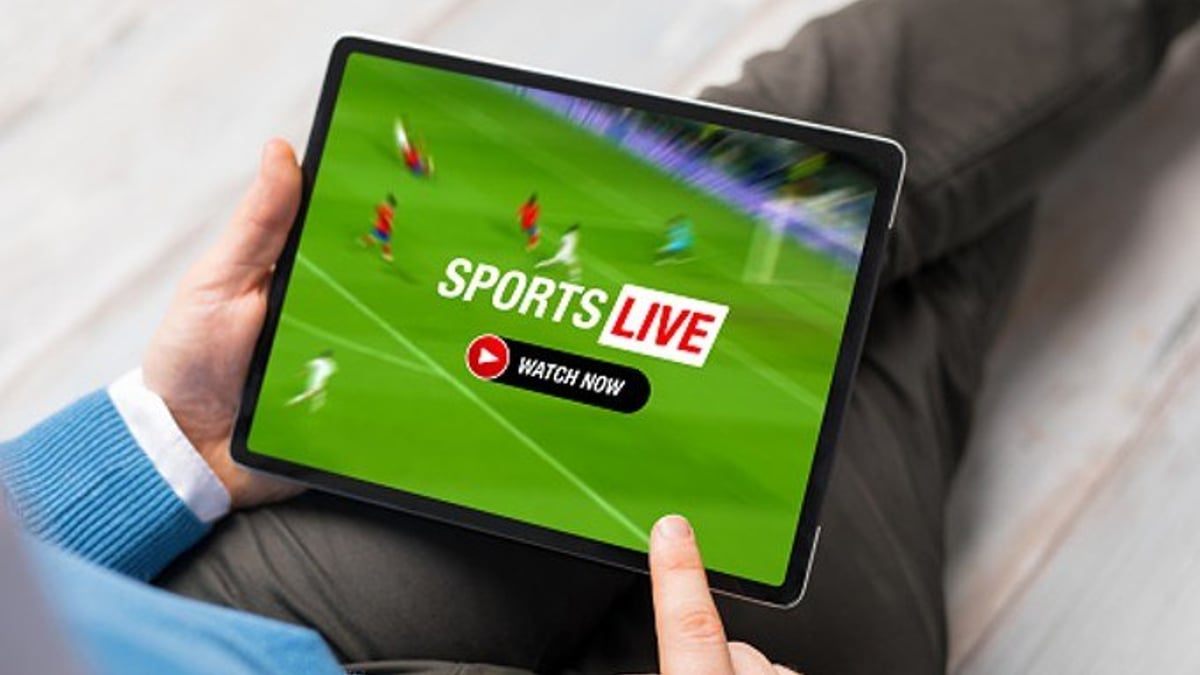How Phenix Wants to Make Live Streaming Faster, Higher Quality for Bettors

Mobile sports betting has continued to expand across the U.S. as states legalize and launch their own sports wagering markets. But the industry is still in its infant stages with some states yet to take up legalization and others adding new operators.
Live streaming and watching events is still relatively new in the U.S. as operators reach streaming deals with platform providers. Bettors have experienced varying quality in watching streams from within these sports apps.
But Phenix is looking to change that.
The platform provider offers real-time streaming for sportsbooks to integrate by offering real-time coverage of sporting events. Real-time streaming latency is less than half a second and allows viewers to see content synchronously drive engagement, enable social interactions and increase revenues. By comparison, the current live streaming offerings now range from five seconds to up a minute of latency with the possibility of buffering issues.
We spoke to Jed Corenthal, the Chief Marketing Officer for Phenix, to learn more about the Phenix platform and how it could change the sports betting experience when it debuts in the U.S.
Gambling.com: Jed, can you give a brief overview just about real-time streaming and how it works in relation to sports betting?

Jed Corenthal: Sure, so what we do is handle the video delivery. From the moment we acquire the signal, the user sees the whatever it is that they're seeing content-wise on their device. We stream using a protocol known as Web RTC, which stands for Web Real-Time Communication. It is most familiar to people that do video conference calls like Zoom, (Microsoft) Teams or (Google) Hangouts. This was designed specifically for video chat, and what we've done is we've taken the protocol, we've built it from the ground up using some proprietary technology, and we're able to stream across the globe and be considered real-time, which is less than half a second end to end. We are able to do that at broadcast scale. We're the only company that's been able to prove at least 500,000 concurrent viewers.
We also stream in-sync across all devices. Many, many times we hear people complain that they're watching a game and you know, you're watching it and then you text with a friend, and he or she has seen something that you haven't yet seen because of the delay in the stream. Those are the types of things that we alleviate. The thing about latency, it's pretty interesting because there's a latency between the field of play and your device, but then there's also something that's referred to as drift, which is the amount of time between the closest, or the best stream, or the shortest amount of latency, to the most. So you and I could be watching, or the three of us could be watching, and all of our latencies are completely different because of the way the technology is built. So, we alleviate all those issues and solve all those issues. As you can imagine, where we shine the most is where there's interactivity of some kind. And of course, the holy grail of interactivity, as you mentioned, is sports betting.
GDC: As someone who has watched streams on FanDuel or another sportsbook, the stream is usually cutting out or not very good, so this is pretty cool to hear about.
JC: The thing is that traditionally betting is based on data, because the data comes in much quicker, so when you're on a sportsbook app, FanDuel, DraftKings, PointsBet or wherever you are, you're looking at odds, you're looking at spreads and things of that nature. With in-play betting, you’re basing your bets on the data that comes in, and what we're trying to do, ultimately, is kind of add a video component to that. So, these sportsbooks that are moving more towards acquiring video rights would be able to offer their users a watch and betting experience, meaning on the same sportsbook app, you can watch the game and bet on the game at the same time. That allows you to make more bets and do in-play betting and true microbetting.
From a sportsbook perspective, it allows them to generate a heck of a lot more transactions, which is what their goal is because people are able to spend more time and engage with whatever content that they're watching. It sort of snowballs into the fact that they're just going to make more bets and spend more time and then make another bet.
GDC: How soon do you think we could see this technology implemented with the well-known sportsbooks in the U.S. such as FanDuel and DraftKings?
JC: Look, we’re talking to them. I think it’s the old story of who is going to be first and who will take the leap of faith. We already do it overseas, but in the U.S., it’s a little bit slower. The market isn’t quite as mature as the overseas market, especially the U.K. But I’m hopeful from some of the conversations we are having with some of the sportsbooks will turn into both what you and I want, which is for them to adopt our technology and start streaming games on their app and taking microbets and everything happens in real time. It’s tough to say when, but I’m hopeful within the next year we’ll start to see it.
GDC: I see your company also does work with iGaming and live dealer casino games. We’re starting to get more online casinos with live dealers in the U.S. How can the technology facilitate a better user experience with live dealer casinos?
JC: The U.S. has been so focused on sports betting legislation that there’s only seven states that have passed iGaming, table games or live dealer games legislation. I think that will pick up. There are many people who believe that the revenue from iGaming will be even bigger than the revenue from sports betting, which is really kind of frightening because the revenue from sports betting will be in the tens, maybe even hundreds of billions over time.
What we do in this space, is we enable these companies to not only stream their table games like roulette, poker, bingo or whatever they got in real-time, but it also in-syncs so everybody plays at the same time. It allows them to have an unlimited number of players playing each game, whereas before they were kind of limited by the number of players that can play a blackjack game at the same time. With our technology, you could have 100,000 or a million people playing at the same time. For them, same thing, they see the opportunity of revenue generation and have jumped at the opportunity. We signed two companies already and are very far down the line with the third, and the third is a big one. It’s funny because it wasn’t a huge focus for us a year ago, but it has become a focus because of the space and the desire to reduce latency. Once we started proving scale and people were comfortable with the fact we could maintain a half second latency while streaming to half a million people, I think that opened a lot of eyes.
GDC: I’ve noticed while watching live dealer games, there could be an awkward pause all the time on blackjack whenever someone was deciding to hit or stay, so would this technology speed up the pace of play?
JC: I think it will speed up everything. There’s no delay. Everybody’s watching at the same time, so absolutely, it will speed up the pace of play. You’ll have more games. I think we’re starting to see from the two companies we have relations with, they’re starting to release more games and more tables, so no question, I think it will just grow.
GDC: How do you see this taking off and how do you see the betting industry in general growing and developing in the U.S. in the coming years?
JC: Let’s say in two years, by the end of 2024, I would think that we’re going to be somewhere in the low to mid 40s in terms of the number of states that have legislation. I think we’ll probably get to 45 and then there will be a couple of holdouts that will take a long time, or who knows? But once you’re in the 40s, it becomes a national business rather than state by state and regional. That will change a lot of things. All the broadcasters in the U.S. that struck deal with betting partners, like PointsBet with NBC, and Caesars and DraftKings, all these different broadcasters, I believe we’ll start seeing more integration into the broadcast itself. Whether that be a second feed that is specific to betting, so the viewer has the opportunity to watch the main feed or the secondary feed in real-time that’s just for betting, odds and graphics and maybe even different announcers. To things where you can sync the broadcast with the sportsbook app and maybe even bet on the broadcast itself.
Another thing I will mention is one other thing that will come to the U.S., and that’s peer-to-peer wagering, meaning you and I are watching a game, and I say to you that Aaron Rodgers will throw a touchdown on the next play, and you say, ‘No. he’s not. I’ll bet you two bucks.’ Not only are we betting against the sportsbook with the odds, but we are betting against each other. Now you’re talking about a level of engagement that really drives handle for the books because you’re spending that much more time.












